So, you are running late for work, and when you jump into your car, the engine won’t start. However, the radio can still work. What could be the problem if the car won’t start, but the radio works?
Several factors may cause that scenario wherein your car’s lights and the radio come on, but you cannot start the engine. This situation could be the result of one or a combination of reasons, namely:
- Loose or Corroded Battery Terminals
- A Dead or Faulty Battery
- A Faulty Starter Motor
- Problems with the Ignition System
- A Blown Ignition Fuse or Relay
- An Empty Fuel Tank or Wrong Fuel Used
- A Faulty Fuel Pump or Clogged Fuel Filter
- Dead Key Fob Battery
- Human Error
Read on to learn more about why your car won’t start, but the radio works. With such knowledge, you can figure out how to fix it yourself.
Car Won’t Start, but Radio Works – 9 Causes
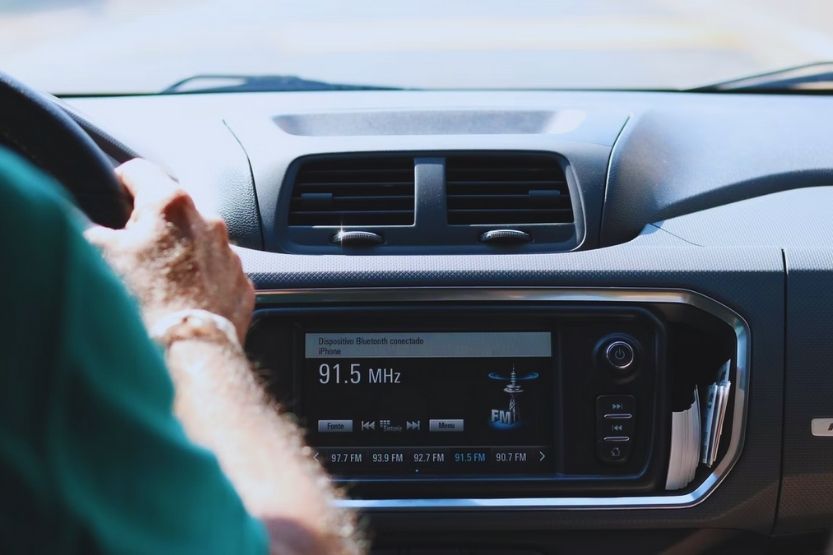
There are very few things that can compare to the amount of stress produced by a non-starting car. This is especially true if you are already running late for a morning meeting. It could be frustrating to turn the car key, and nothing happens, but the lights work.
Will you be able to fix this kind of problem on your own? Or do you need to get your car towed to the nearest mechanic’s garage?
There are multiple possible reasons why your car is not starting. We will be discussing every one of them in more detail:
1. Loose or Corroded Battery Terminals
The battery is the first suspect that most car owners would point to when their cars don’t start. Most of the time, especially for newbie car owners, the issue is not really with the battery itself. It is often with the terminals.
Tighten the Nuts of the Battery Connectors
After some time, the battery terminal connectors might have gotten loose. If you have loose connectors, they can’t provide enough contact to deliver sufficient current to the starter motor. In that case, you will only need to use a wrench to tighten the nuts of the battery connectors.
The battery terminals can also get too corroded that they no longer have contact with the connectors. You can detect this issue if you find plenty of white, hard stuff stuck on the battery terminals.
How to Fix
You can fix this issue just by cleaning the battery terminals:
- Disconnect the battery.
- Use clean water and an old toothbrush to scrub off the corrosion.
- Reattach and tighten the connectors, and your car should start with no problem.
2. A Dead or Faulty Battery
Jump Start the Battery
If the battery terminals are not the problem, likely, the battery may already be dead. If you accidentally drained the battery, like leaving the headlights on all night, there are ways to fix it. You can fix it by getting a jump start from another vehicle or hooking up the battery to a charger.
Replace the Old Battery
Meanwhile, if the battery is already quite old, it is time to replace it. A replacement may be more necessary, especially if it can no longer hold a charge. A car’s battery can last for five years with proper care and maintenance. Any longer than that, and it will need replacing.
How to Fix
- Hook up the car battery to an external charger if you have access to one.
- If not, connect the battery in series with another car’s battery to jumpstart the engine.
- Leave the engine running for fifteen minutes to charge the battery, and you should be good to go.
If your car’s battery is older than five years, it is probably time to retire it. This means you should get a new one instead. Once a battery gets to a certain age, it cannot hold a charge anymore.
3. A Faulty Starter Motor
The starter motor refers to the small yet powerful electric motor responsible for turning over and starting the motor. If the starter motor is faulty, your car’s engine will not start even with a fully charged battery.
How to Fix
Most of the time, the starter motor is not malfunctioning at all. It could be that the connector has been jogged loose. However, you will need access to the starter motor to confirm and fix this issue. It is usually in an inaccessible location.
This means you still need to take your car to the mechanic. If it turns out that the starter engine is already out of commission, you will need to have it replaced.
4. Problems with the Ignition System
Unless you drive a diesel engine vehicle, your car relies on sparkplugs and electricity to run. As the name suggests, the ignition system is responsible for lighting the fuel-air mixture in the chamber. This can make the pistons move up and down.
If there is no spark, the fuel-air mixture will not combust, and you will only be flooding the chambers.
How to Fix
Sometimes, this problem is easy to fix by replacing or cleaning the sparkplugs. However, if the problem lies deep within the ignition system, a consultation with a professional mechanic is in order.
5. A Blown Ignition Fuse or Relay
A Relay Is Like a Switch That Opens or Closes Circuits
Let’s get one thing out of the way. A relay is not a fuse. A relay is more like a switch that opens or closes circuits. An outside force also controls it.
A Fuse Protects the Circuit from Electricity Surges
A fuse protects the circuit from electricity surges and can only once. With that said, both a blown ignition relay and fuse can cause your car not to start.
Even with a fully charged battery, the power can’t reach the starter motor and sparkplugs in case of blown relays and fuses. To check, inspect the fuse box of your car. It can either be inside the bonnet, underneath the driver’s side dashboard or sometimes both.
How to Fix
- Check the fuse box cover diagram to determine which fuse or relay is for the ignition.
- Using the tool in the fuse box, carefully pull out the relay or fuse and inspect it for damage. Of course, you should do this with the car key taken out of the ignition switch.
- If the fuse or relay has scorch marks, or at times, the plastic has melted a bit, replace them immediately.
- Regarding fuses, they are always transparent. This means you can easily check if the metal inside the fuse is still in one piece or not.
6. An Empty Fuel Tank/Wrong Fuel Used
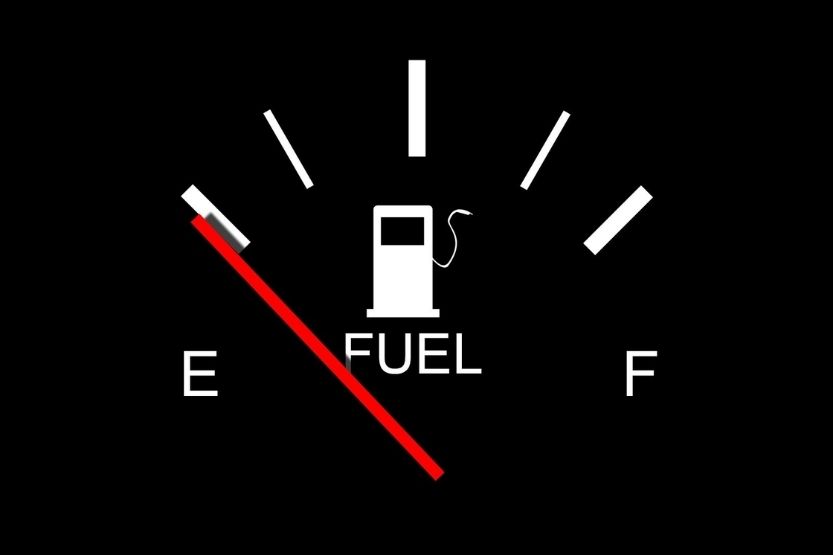
You might not have noticed it last night when you were so tired when driving home from work. However, the red fuel signal flashed on and off while driving.
The following day, upon starting your car, the engine started for a couple of seconds and then died. This is what happens when you do not have fuel in your tank.
Damage the Fuel Pump
Emptying your gas tank is not that big of a deal. However, it can damage the fuel pump if you do it enough times. An infinitely scarier scenario is that you did not forget to fill up your tank but used the wrong fuel.
For instance, you have a gas-powered car, pumped diesel into it, and vice-versa. Your engine will not start when you use the wrong fuel, but it may also damage it.
How to Fix
Dealing with an empty gas tank is easy. Just fill it up, and you are good to go. Fixing a gas tank filled with the wrong fuel is not advisable:
- Drain the gas tank.
- You might need to jack up your car to access the gas tank drain plug.
- After that, place a large container to catch the fuel. Next, pray that you haven’t damaged the pistons, valves, and other engine components yet.
- Replace the plug into the fuel tank and put half a gallon of the correct fuel. Hopefully, you haven’t damaged your car’s engine yet, and it will still run properly.
If you hear a knocking sound coming from your engine, you better bring it to your mechanic.
7. A Faulty Fuel Pump or Clogged Fuel Filter
You are sure that you put in the right fuel, but the engine still seems not to get any. In this case, you might have a busted fuel pump or a clogged fuel filter.
Hopefully, it is the latter and not the former. If these two components are the problem, you will hear the engine turn over, but it won’t start.
How to Fix
It is easy to fix if the problem is a clogged fuel filter:
- Locate the fuel filter, usually inside the car’s bonnet. It looks like a canister with the fuel line going in and out. In older cars, the fuel filter is a small semi-translucent canister. You can see a small amount of fuel inside it.
- Once you find the fuel filter, remove the fuel lines and replace the filter with a new one. Have you replaced the fuel filter successfully, but it does not seem like fuel is going into the engine? Then it might be the fuel pump that is the problem.
- This will be more difficult since the fuel pump is inside the fuel tank. This means that you will need to bring your car to a mechanic to check it properly.
8. Dead Key Fob Battery
If you are driving a newer model car, it might come with an immobilizer. The key fob is the one that controls it, which makes it a useful security feature. It prevents the car from getting started by using a key copy or forcing the ignition switch to turn.
RFID Chip Sends a Signal to the Car’s Receiver
The transponder is an RFID chip that sends a signal to the receiver in the car. If the receiver recognizes the transponder’s signal, the engine will start.
However, if the battery in the key fob has died, the transponder can’t send out a signal. You will know that it is the case if a flashing key symbol appears on your dashboard.
How to Fix
This problem is relatively easy to fix because you need to replace the old battery:
- Grab your key fob and use a small screwdriver to open the casing.
- Carefully take out the battery, which usually looks like a huge watch battery. It is typically CR2016/CR2025/CR2032. After that, replace the old one.
- After replacing the battery, the key symbol no longer lights up. If such is the case, you can start the car again.
9. Human Error
Often, your car does not start due to a mechanical or electrical problem or a silly mistake. Modern cars come with safety features that prevent the accidental starting of the engine.
If you bought your car secondhand without knowing its built-in safeguards, here are some of the more common ones:
Not Pressing on the Clutch Pedal
If you have a manual transmission car, you should press on the brake and clutch pedal before turning the key. You will not even hear the engine turning if you don’t do this. Make sure that you depress the clutch, or else it will not work.
Not Wearing Your Seatbelt
Some cars will not let you start the engine when the driver is not wearing a seatbelt. This is a much better reminder to strap up rather than the flashing signal in the dashboard.
Shift Knob Is in Drive
If you are driving an automatic, you may have forgotten that you left it in Drive. This could be when you pulled the key out of the ignition.
Most cars have a safety feature that will not start when the shifter is not in Park or Neutral. Just slide the shifter into the correct position and start the car.
Again, why won’t my car start but the radio work? You might have dirty or corroded battery terminals if your radio is on, but your car won’t start. The terminals connect the electric system to the battery.
Car Won’t Start, No Clicking, No Noise
Frequently Asked Questions (FAQs)
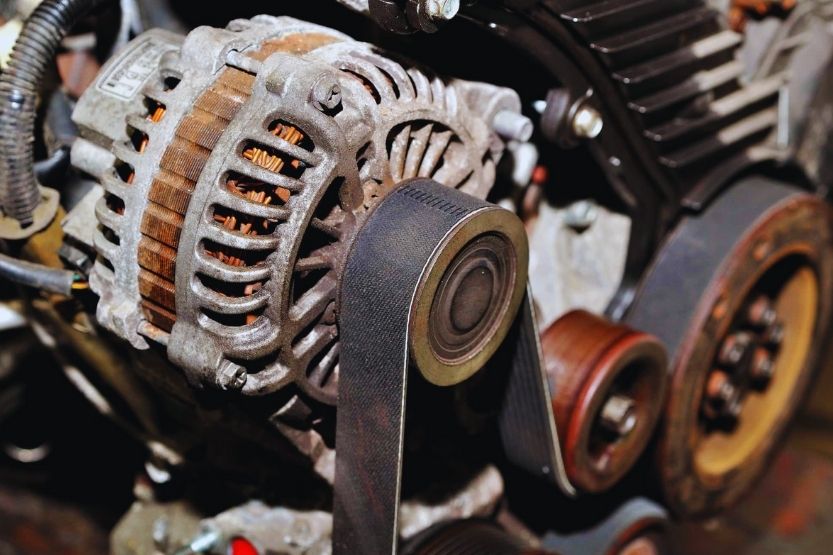
Can a Faulty Alternator Break My Batteries?
If you have a faulty alternator, you will constantly be draining your car batteries. If the batteries are drained continuously, it will significantly shorten their lifespan.
Constantly discharging the battery will lessen its maximum capacity. The problem is that when it gets low enough, it will no longer hold a charge.
In addition, if your alternator does not work, your engine may die while you’re in the middle of the road. The sparkplugs need electricity to work. The engine will also stop working once the battery runs out of juice.
Can a Gasoline Car Run on Diesel and Vice-Versa?
Diesel fuel is too thick for gasoline engines, so it will gunk up the cylinders, causing them to seize. Meanwhile, gasoline does not contain lubricants needed by diesel engines to work. Not having lubrication will cause the pistons to seize and damage the engine.
How Do You Connect Batteries for a Jumpstart?
- Connect the positive clamp to the dead battery’s positive terminal.
- After that, connect the positive clamp to the positive of the good battery.
- Then, connect the negative clamp to the terminal of the good battery.
- The next step is to connect the other end to a metal ground. This is any metal part on the dead battery car. Typically, people use the frame of the car as the ground.
How Do You Push Start a Manual Transmission Car?
Are you driving a manual transmission car whose battery died on you while parked on a hill? Then you can still get it started without a jumpstart. First, put the ignition switch on the on position and then shift to the second gear.
Step on the brakes and the clutch. After that, slowly release the parking brake.
Once done, you can slowly remove your feet from the brakes. Once your car is rolling, take your feet off the clutch. The car will jerk a little, and the engine will start. If you park on a flat surface, have someone help you by pushing your car.
Conclusion – Car Will Not Start But Radio Works
If your car’s radio turns on, the battery might still be good. However, if the engine won’t start, it could be due to other reasons. There are many reasons why your car won’t start but has power, namely:
- Loose or Corroded Battery Terminals
- A Dead/Faulty Battery
- A Faulty Starter Motor
- Problems with the Ignition System
- A Blown Ignition Fuse/Relay
- An Empty Fuel Tank/Wrong Fuel Used
- A Faulty Fuel Pump or Clogged Fuel Filter
- Dead Key Fob Battery
- Human Error
You can fix most of these problems quickly, even on your own. However, other causes have to be looked into by a professional mechanic. Don’t panic just yet when your car doesn’t start. Sometimes, it can only be a silly mistake that caused it.
Check out as many of the reasons stated above first and see if you can do something about it.
Read next:

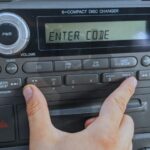

![Car Won’t Turn Over but Has Power [Causes and How to Fix] car wont turn over but has power](https://roadsumo.com/wp-content/uploads/2022/04/car-wont-turn-over-but-has-power-150x150.jpg)


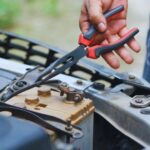
![Read more about the article Who Makes Icon Tools? Where Are Icons Tools Made? [Icon Tools Review]](https://roadsumo.com/wp-content/uploads/2021/06/who-makes-icon-tools-300x200.jpg)
![Read more about the article CV Joint Noise [When Driving Straight or Turning]](https://roadsumo.com/wp-content/uploads/2021/06/cv-joint-noise-300x200.jpg)
![Read more about the article Grinding Noise When Braking [9 Possible Causes and How to Fix]](https://roadsumo.com/wp-content/uploads/2021/06/grinding-noise-when-braking-300x200.jpg)